Journal Description
International Journal of Translational Medicine
International Journal of Translational Medicine
is an international, peer-reviewed, open access journal on major advances in both experimental and clinical medicine, with a particular emphasis on translational research published quarterly online by MDPI.
- Open Access— free for readers, with article processing charges (APC) paid by authors or their institutions.
- Rapid Publication: manuscripts are peer-reviewed and a first decision is provided to authors approximately 14.2 days after submission; acceptance to publication is undertaken in 4.6 days (median values for papers published in this journal in the second half of 2023).
- Recognition of Reviewers: APC discount vouchers, optional signed peer review, and reviewer names published annually in the journal.
- IJTM is a companion journal of Biomedicines.
Latest Articles
Potential of Exosomes as Therapeutics and Therapy Targets in Cancer Patients
Int. J. Transl. Med. 2024, 4(2), 247-261; https://doi.org/10.3390/ijtm4020015 - 08 Apr 2024
Abstract
After an initial positive response to chemotherapy, cancer patients often acquire chemoresistance and tumor relapse, which makes cancer one of the most lethal diseases worldwide. Exosomes are essential mediators of cell-to-cell communication by delivering their cargo, such as proteins, RNAs and DNA, from
[...] Read more.
After an initial positive response to chemotherapy, cancer patients often acquire chemoresistance and tumor relapse, which makes cancer one of the most lethal diseases worldwide. Exosomes are essential mediators of cell-to-cell communication by delivering their cargo, such as proteins, RNAs and DNA, from cell to cell. They participate in cancer progression, metastasis, immune response and therapy resistance. Their ability to shuttle between cells makes them efficient drug delivery systems. As drug transporters, they provide novel strategies for cancer therapy by advancing targeted drug therapy and improving the therapeutic effects of anti-cancer medications. In this review, a comprehensive overview of the potential of exosomes as therapeutic agents and targeted molecules in the treatment of cancer patients is given. The current challenges of preparation of exosomes loaded with drugs and delivering them to the recipient tumor cells as well as a consequent exosome-mediated cancer therapy are also discussed.
Full article
(This article belongs to the Collection Feature Papers in International Journal of Translational Medicine)
►
Show Figures
Open AccessBrief Report
An Interdisciplinary Approach to Biobanking in Cardiac Surgery: Protocol of a Prospective, Single-Center Research Project Involving Longitudinal Biobanking
by
Theresa Holst, Angela Langer, Tatiana M. Sequeira Gross, Noureldin Abdelmoteleb, Valentina Miskovic, Lisa Müller, Sina Stock, Bruno Märkl and Evaldas Girdauskas
Int. J. Transl. Med. 2024, 4(2), 238-246; https://doi.org/10.3390/ijtm4020014 - 04 Apr 2024
Abstract
►▼
Show Figures
Cross-sectional and longitudinal profiling of full sets of nucleic acids, peptides, or proteins as well as metabolites expressed in biospecimens acquired via a cardiovascular disease-oriented biobank may aid in the elucidation of the disease pathways and mechanisms underlying individual cardiovascular diseases, such as
[...] Read more.
Cross-sectional and longitudinal profiling of full sets of nucleic acids, peptides, or proteins as well as metabolites expressed in biospecimens acquired via a cardiovascular disease-oriented biobank may aid in the elucidation of the disease pathways and mechanisms underlying individual cardiovascular diseases, such as degenerative valvular heart disease. This may promote the development of novel and effective, personalized diagnostic and therapeutic strategies to efficiently reduce cardiovascular mortality and morbidity as well as its health and economic burden. This brief report aims to describe the unique, standardized, interdisciplinary, and interprofessional approach to cross-sectional and longitudinal cardiovascular biobanking and databasing at the University Hospital Augsburg. Moreover, we present the study protocol of a specific, well-defined, prospective, single-center research project involving cross-sectional and longitudinal cardiovascular biobanking. The aim of this project is to gain a better insight into the molecular mechanisms underlying aortic valve disease-induced cardiomyopathy and the long-term effect of surgical correction of the aortic valve pathology on the left ventricular myocardial molecule profile.
Full article

Figure 1
Open AccessArticle
The Co-Localization of NLRP3 and ASC Specks Does Not Automatically Entail NLRP3 Inflammasome Functionality in PDAC Cell Lines
by
Heléne Lindholm, Matthew Herring, Maria Faresjö, Johan Haux, Ferenc Szekeres and Katarina Ejeskär
Int. J. Transl. Med. 2024, 4(2), 224-237; https://doi.org/10.3390/ijtm4020013 - 30 Mar 2024
Abstract
►▼
Show Figures
The NLRP3 inflammasome is an important mediator of the host inflammatory response, and downregulation of inflammation is important in cancer treatment. Here, we investigated four different pancreatic ductal adenocarcinoma (PDAC) cell lines, AsPC-1, BxPC-3, CFPAC-1 and Panc-1, with regards to NLRP3 inflammasome formation
[...] Read more.
The NLRP3 inflammasome is an important mediator of the host inflammatory response, and downregulation of inflammation is important in cancer treatment. Here, we investigated four different pancreatic ductal adenocarcinoma (PDAC) cell lines, AsPC-1, BxPC-3, CFPAC-1 and Panc-1, with regards to NLRP3 inflammasome formation and cytokine secretion. ASC specks were observed in all the cell lines investigated, but AsPC-1 was the only cell-line with the co-localization of anti-ASC and anti-NLRP3 and spontaneously formed multiple NLRP3 inflammasomes per cell. The co-localization of NLRP3 and ASC was not accompanied by IL-1β release nor significant IL-18 release. BxPC-3 displayed relatively high expression of the inflammasome-related genes IL1B and CASP1 and had the highest levels of IL1β and IL18 secretion and the highest amount of ASC. The inflammasome-associated genes IL18 and PYCARD were up-regulated in the PDAC primary tumors compared to normal tissue, and high PDAC tumor expression of IL18, CASP1 and PYCARD correlated with low patient survival. We have shown that PDAC cell lines display significant variations in their inflammasome-related gene expression and readouts. We conclude that spontaneous ASC speck formation is possible in PDAC cells and that multiple NLRP3 inflammasomes are formed spontaneously in AsPC-1 cells but that the co-localization of NLRP3 and ASC specks does not automatically entail inflammasome function.
Full article

Figure 1
Open AccessArticle
Spatial Computational Hepatic Molecular Biomarker Reveals LSEC Role in Midlobular Liver Zonation Fibrosis in DILI and NASH Liver Injury
by
Munish Puri
Int. J. Transl. Med. 2024, 4(2), 208-223; https://doi.org/10.3390/ijtm4020012 - 23 Mar 2024
Abstract
The liver is structurally organized into zonation, where Liver Sinusoidal Endothelial Cells (LSECs) play a crucial role during chronic liver injury and the early stages of fibrosis. Fibrosis can be reversed if diagnosed early at the molecular level in zonation before progressing to
[...] Read more.
The liver is structurally organized into zonation, where Liver Sinusoidal Endothelial Cells (LSECs) play a crucial role during chronic liver injury and the early stages of fibrosis. Fibrosis can be reversed if diagnosed early at the molecular level in zonation before progressing to advanced stages like bridging fibrosis. This study identified zonation marker genes using scRNA-seq and spatial transcriptomics molecular profiling technologies in a normal and diseased fibrotic human liver. DGE analysis was performed over LSECs, and we identified the top 20 expressed genes in the periportal, perivenous, and intermediate acinar zones. Multi-omics and scRNA-seq analysis over Visium images and ECs liver cells showed OIT3, DNASE1L3, CLEC4G, LYVE1, FCN2, and CRHBP as commonly expressed mid-lobular zonation-specific genes. Also, this study detected STAB2, F8, AQP1, TEK, TIMP3, TIE1, and CTSL genes as expressed in DILI and NASH EC populations. The connection between LSEC marker genes in zone 2 and liver fibrosis holds significant promise for advancing our understanding in developing new therapeutic strategies for fibrosis reversal and designing computational molecular biomarkers in NASH and DILI fibrotic liver diseases.
Full article
(This article belongs to the Collection Feature Papers in International Journal of Translational Medicine)
►▼
Show Figures
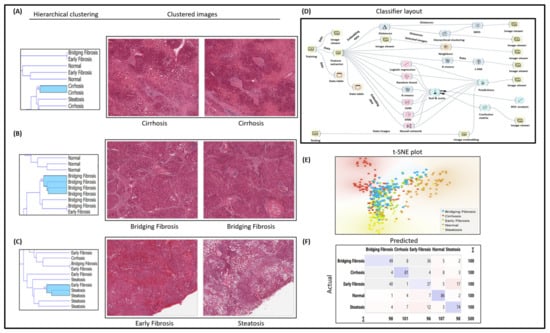
Figure 1
Open AccessReview
A Review of High-Intensity Focused Ultrasound
by
Ben Turner and David Cranston
Int. J. Transl. Med. 2024, 4(1), 197-207; https://doi.org/10.3390/ijtm4010011 - 12 Mar 2024
Abstract
►▼
Show Figures
For 80 years, high-intensity focused ultrasound (HIFU) has been the subject of interest in medical research. It is a non-invasive procedure that causes the death of cells in a very select area through one of two mechanisms, either heat or cavitation. While diagnostic
[...] Read more.
For 80 years, high-intensity focused ultrasound (HIFU) has been the subject of interest in medical research. It is a non-invasive procedure that causes the death of cells in a very select area through one of two mechanisms, either heat or cavitation. While diagnostic ultrasound is well known in the medical profession and ultrasound is also used in physiotherapy, high-intensity focused ultrasound is less known but is becoming increasingly important as a non-invasive tool that can be used in many ways, including in the treatment of several cancers as well as benign uterine fibroids. Other interesting developments are underway, including its use in the treatment through an intact skull of essential tremors and the tremor associated with Parkinson’s disease, and in a modified form, it is used to target drug delivery to the brain due to its potential opening of the blood–brain barrier. The depth of penetration of HIFU is variable depending on the type of transducer used and the distance from it. Clinical trials of abdominal malignancies and benign uterine fibroids are reviewed in this article along with potential side effects of the procedure. Over the past two decades, the technology has improved considerably, and the clinical indications have broadened. The current limitations of the technology are also discussed, along with the potential advances in the field that may be made over the next decade.
Full article

Figure 1
Open AccessReview
Advancements Exploring Major Depressive Disorder: Insights on Oxidative Stress, Serotonin Metabolism, BDNF, HPA Axis Dysfunction, and Pharmacotherapy Advances
by
Ana Salomé Correia and Nuno Vale
Int. J. Transl. Med. 2024, 4(1), 176-196; https://doi.org/10.3390/ijtm4010010 - 05 Mar 2024
Abstract
►▼
Show Figures
Major depressive disorder (MDD), a prevalent mental illness, is marked by a complex mixture of biological factors. This review focuses on the roles of oxidative stress, tryptophan-serotonin metabolism, brain-derived neurotrophic factor (BDNF), and the hypothalamic–pituitary–adrenal (HPA) axis in MDD’s pathophysiology. Oxidative stress, defined
[...] Read more.
Major depressive disorder (MDD), a prevalent mental illness, is marked by a complex mixture of biological factors. This review focuses on the roles of oxidative stress, tryptophan-serotonin metabolism, brain-derived neurotrophic factor (BDNF), and the hypothalamic–pituitary–adrenal (HPA) axis in MDD’s pathophysiology. Oxidative stress, defined as an imbalance between pro-oxidants and antioxidants, is closely linked to MDD’s neurobiological changes. The tryptophan (TRP)-/serotonin (5-HT) metabolic pathway is also known to be crucial in mood regulation, with its dysregulation being a central aspect of MDD. Additionally, BDNF, key for neuronal growth and plasticity, often shows alterations in MDD patients, supporting its role in the disorder’s progression. Furthermore, the HPA axis, which manages stress response, is frequently disrupted in MDD, further contributing to its complex pathology. In addition to exploring these biological mechanisms, this review also explores the pharmacotherapy of MDD, including new advances. These advancements in treatment strategies are crucial for managing MDD effectively. Understanding these mechanisms and the latest pharmacological interventions is essential for developing more effective treatments for MDD.
Full article

Figure 1
Open AccessArticle
Assessment of Surgical Difficulty in Patients with Rectal Cancer—The Impact of Pelvimetry
by
João Stuart, Pedro Miguel Dias dos Santos, Carlos Costa Pereira and Sandra F. Martins
Int. J. Transl. Med. 2024, 4(1), 163-175; https://doi.org/10.3390/ijtm4010009 - 17 Feb 2024
Abstract
►▼
Show Figures
Background: Low-quality tumoral surgical excision is the major relapse factor in rectal cancer. If the surgery is highly difficult, the quality of the resection might be compromised. In the literature, it is described how low pelvic dimensions can make this type of surgery
[...] Read more.
Background: Low-quality tumoral surgical excision is the major relapse factor in rectal cancer. If the surgery is highly difficult, the quality of the resection might be compromised. In the literature, it is described how low pelvic dimensions can make this type of surgery difficult. The main aim was to study the influence of pelvic measures in surgical difficulty on the patients submitted to tumoral surgical resection with curative intent. Methods: A retrospective, observational and analytic study was conducted. A total of 73 patients over a period of 3 years were included. Demographic and surgical data, as well as measurements of the pelvis taken from MRI, were collected. An univariate and multivariate analysis was performed. Results: 11 (15.1%) patients were classified as having highly difficult surgeries. All 11 patients were male. Significant differences were found between groups regarding gender (p = 0.013), transverse diameter of the pelvis (p < 0.001), interspinal distance (p = 0.014) and intertuberous distance (p < 0.001). The logistic regression revealed that a small transverse diameter (O.R. 0.919, 95% I.C. 0.846–0.999, p = 0.047) increases the degree of difficulty of the surgery. Conclusions: Male patients with a small pelvic measurement deserve a thorough surgical plan that predicts a quality resection.
Full article

Figure 1
Open AccessReview
Overlapping Receptor-Based Pathogenic Cascades in Degenerative Disease: Implications Ranging from Tumor Targeting to Aging and Dementia Therapeutics
by
Joseph S. D’Arrigo
Int. J. Transl. Med. 2024, 4(1), 152-162; https://doi.org/10.3390/ijtm4010008 - 06 Feb 2024
Abstract
►▼
Show Figures
Previous research has already shown that apolipoprotein (apo)A-I is adsorbed from the bloodstream onto the surface of certain colloidal lipid particles after the intravenous injection of such colloidal nanocarriers. As a result, various blood–brain barrier (BBB) scavenger receptors are targeted by these (apoA-I-coated)
[...] Read more.
Previous research has already shown that apolipoprotein (apo)A-I is adsorbed from the bloodstream onto the surface of certain colloidal lipid particles after the intravenous injection of such colloidal nanocarriers. As a result, various blood–brain barrier (BBB) scavenger receptors are targeted by these (apoA-I-coated) colloidal nanocarriers. This targeted molecular interaction is mediated/facilitated by the adsorbed apoA-I, which is then followed by receptor-mediated endocytosis and subsequent transcytosis of the nanocarrier particles across the BBB. A multifunctional combination therapy is obtained by adding the appropriate drug(s) to these biomimetic (lipid cubic phase) nanocarriers. This therapeutic targets specific cell-surface scavenger receptors, primarily class B type I (SR-BI), and crosses the blood–brain barrier. The lipid contents of artificial biomimetic (nanoemulsion) nanocarrier particles and of naturally occurring high-density lipoproteins (HDL) have been shown to be similar, which enables these nanocarrier particles to partially imitate or simulate the known heterogeneity (i.e., subpopulations or subspecies) of HDL particles. Hence, colloidal drug nanocarriers have the potential to be used in the biomedical treatment of complicated medical conditions including dementia, as well as certain elements of aging. Widespread inflammation and oxidative stress—two processes that include several pathophysiological cascades—are brought on by dementia risk factors. More recent studies suggest that proinflammatory cytokines may be released in response to a prolonged inflammatory stimulus in the gut, for example through serum amyloid A (SAA). Therefore, pharmacologically targeting a major SAA receptor implicated in the SAA-mediated cell signaling processes that cause aging and/or cognitive decline, and ultimately Alzheimer’s disease or (late-onset) dementia, could be an effective preventive and therapeutic approach.
Full article
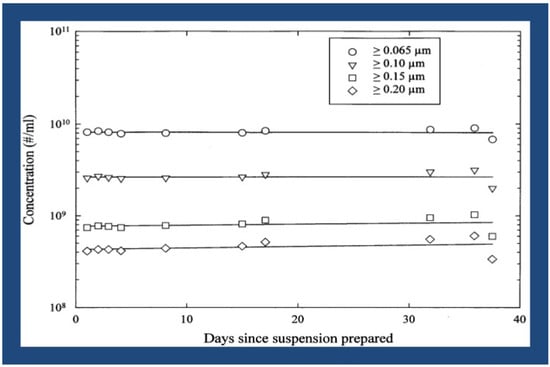
Figure 1
Open AccessArticle
Human Pulmonary Artery Endothelial Cells Increased Glycolysis and Decreased Nitric Oxide Synthase O-GlcNAcylation in Pulmonary Arterial Hypertension
by
Sarah E. Basehore and Alisa Morss Clyne
Int. J. Transl. Med. 2024, 4(1), 140-151; https://doi.org/10.3390/ijtm4010007 - 02 Feb 2024
Abstract
►▼
Show Figures
Pulmonary arterial hypertension (PAH) is a fatal disease that primarily affects women. In PAH, endothelial cells become dysfunctional, reducing production of the vasodilator nitric oxide while increasing proliferation. Other studies suggest altered glucose metabolism in PAH. Our recent study showed that increased endothelial
[...] Read more.
Pulmonary arterial hypertension (PAH) is a fatal disease that primarily affects women. In PAH, endothelial cells become dysfunctional, reducing production of the vasodilator nitric oxide while increasing proliferation. Other studies suggest altered glucose metabolism in PAH. Our recent study showed that increased endothelial glucose metabolism in disturbed flow increased O-GlcNAcylation of endothelial nitric oxide synthase (eNOS), the enzyme that makes nitric oxide, which then reduced nitric oxide production. We therefore hypothesized that elevated endothelial glycolytic activity in PAH endothelial cells would reduce nitric oxide production by increasing eNOS O-GlcNAcylation. We cultured human pulmonary artery endothelial cells (HPAECs) from failed lung transplant (“non-PAH”) and idiopathic PAH patients (“PAH”) and quantified glycolytic activity, nitric oxide production, and eNOS O-GlcNAcylation in each cell type. Our data show that PAH HPAECs had higher glucose uptake and glycolytic metabolites, as well as decreased nitric oxide production, compared to non-PAH HPAECs. However, PAH HPAECs had lower eNOS O-GlcNAcylation and UDP-GlcNAc, the substrate for O-GlcNAcylation. Interestingly, both glucose uptake and eNOS O-GlcNAcylation were higher in female as compared to male HPAECs. These data suggest that although endothelial glycolytic metabolism is altered in PAH, eNOS O-GlcNAcylation is not connected to decreased nitric oxide. In addition, differences in glucose metabolism and protein O-GlcNAcylation in HPAECs from male and female donors could relate to PAH sexual dimorphism.
Full article
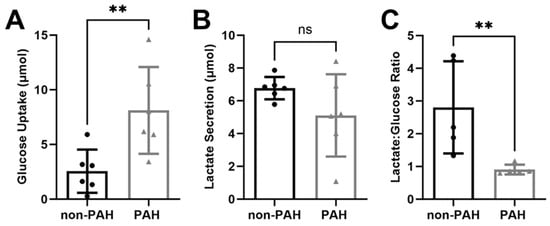
Figure 1
Open AccessArticle
Pantoea agglomerans Lipopolysaccharide Controls Nasal Discomfort—A Placebo-Controlled, Randomized, Double-Blind, Parallel-Group Comparison Trial
by
Chie Kohchi, Miyuki Uehiro, Taisuke Fukaya, Norikazu Watanabe, Hiroyuki Inagawa and Gen-Ichiro Soma
Int. J. Transl. Med. 2024, 4(1), 126-139; https://doi.org/10.3390/ijtm4010006 - 01 Feb 2024
Abstract
►▼
Show Figures
The present study examined the effects of foods containing lipopolysaccharides from Pantoea agglomerans (LPSp) on eye–nose allergic symptoms using a double-blind, placebo-controlled, randomized, parallel-group comparative research design. Sixty-three Japanese individuals aged 20–65 years with eye–nose allergic symptoms were included in this study and
[...] Read more.
The present study examined the effects of foods containing lipopolysaccharides from Pantoea agglomerans (LPSp) on eye–nose allergic symptoms using a double-blind, placebo-controlled, randomized, parallel-group comparative research design. Sixty-three Japanese individuals aged 20–65 years with eye–nose allergic symptoms were included in this study and assigned to the LPS (480 μg/day)-containing food and placebo groups. Data on the subjective eye–nose allergic symptoms and antiallergic medication during the 8-week period were evaluated. The immunoglobulin E (IgE) and eosinophil counts were measured as indicators that may be correlated with allergy. No significant group differences were found in the change in eye–nose allergic symptoms from baseline. However, the LPS group showed a significantly shorter duration of antiallergic medication use and lower total antiallergic drug score than the placebo group. The corrected nasal allergy score calculated by taking into account the antiallergic drug score at week 8 was predominantly lower in the LPS group. The IgE to house dust and cedar pollen and eosinophil counts tended to be lower in the LPS group, and the total IgE and eosinophil counts were significantly lower in the LPS group at week 4. In conclusion, our results indicate that LPS-containing foods alleviate eye–nose allergic symptoms and consequently lower the use of antiallergic drugs (UMIN000049974).
Full article

Figure 1
Open AccessReview
Dental Stem Cell-Based Therapy for Glycemic Control and the Scope of Clinical Translation: A Systematic Review and Meta-Analysis
by
Pallavi Tonsekar, Vidya Tonsekar, Shuying Jiang and Gang Yue
Int. J. Transl. Med. 2024, 4(1), 87-125; https://doi.org/10.3390/ijtm4010005 - 15 Jan 2024
Abstract
Background: The tooth is a repository of stem cells, garnering interest in recent years for its therapeutic potential. The aim of this systematic review and meta-analysis was to test the hypothesis that dental stem cell administration can reduce blood glucose and ameliorate polyneuropathy
[...] Read more.
Background: The tooth is a repository of stem cells, garnering interest in recent years for its therapeutic potential. The aim of this systematic review and meta-analysis was to test the hypothesis that dental stem cell administration can reduce blood glucose and ameliorate polyneuropathy in diabetes mellitus. The scope of clinical translation was also assessed. Methods: PubMed, Cochrane, Ovid, Web of Science, and Scopus databases were searched for animal studies that were published in or before July 2023. A search was conducted in OpenGrey for unpublished manuscripts. Subgroup analyses were performed to identify potential sources of heterogeneity among studies. The risk for publication bias was assessed by funnel plot, regression, and rank correlation tests. Internal validity, external validity, and translation potential were determined using the SYRCLE (Systematic Review Center for Laboratory Animal Experimentation) risk of bias tool and comparative analysis. Results: Out of 5031 initial records identified, 17 animal studies were included in the review. There was a significant decrease in blood glucose in diabetes-induced animals following DSC administration compared to that observed with saline or vehicle (SMD: −3.905; 95% CI: −5.633 to −2.177; p = 0.0004). The improvement in sensory nerve conduction velocity (SMD: 4.4952; 95% CI: 0.5959 to 8.3945; p = 0.035) and capillary-muscle ratio (SMD: 2.4027; 95% CI: 0.8923 to 3.9132; p = 0.0095) was significant. However, motor nerve conduction velocity (SMD: 3.1001; 95% CI: −1.4558 to 7.6559; p = 0.119) and intra-epidermal nerve fiber ratio (SMD: 1.8802; 95% CI: −0.4809 to 4.2413; p = 0.0915) did not increase significantly. Regression (p < 0.0001) and rank correlation (p = 0.0018) tests indicated the presence of funnel plot asymmetry. Due to disparate number of studies in subgroups, the analyses could not reliably explain the sources of heterogeneity. Interpretation: The direction of the data indicates that DSCs can provide good glycemic control in diabetic animals. However, methodological and reporting quality of preclinical studies, heterogeneity, risk of publication bias, and species differences may hamper translation to humans. Appropriate dose, mode of administration, and preparation must be ascertained for safe and effective use in humans. Longer-duration studies that reflect disease complexity and help predict treatment outcomes in clinical settings are warranted. This review is registered in PROSPERO (number CRD42023423423).
Full article
(This article belongs to the Collection Feature Papers in International Journal of Translational Medicine)
►▼
Show Figures
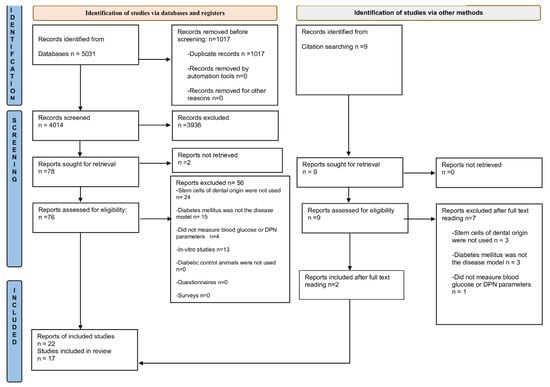
Figure 1
Open AccessReview
The Natural History of SARS-CoV-2-Incurred Disease: From Infection to Long COVID
by
Kung-Hao Liang, Yuan-Chi Teng, Yi-Ting Liao, Aliaksandr A. Yarmishyn, Su-Hua Chiang, Wei-Chun Hung, Chun-Yen Hsiao, En-Tung Tsai, Tai-Jay Chang, De-Ming Yang and Mong-Lien Wang
Int. J. Transl. Med. 2024, 4(1), 72-86; https://doi.org/10.3390/ijtm4010004 - 08 Jan 2024
Abstract
The coronavirus SARS-CoV-2 is the causative pathogen of the COVID-19 pandemic that has been causing global upheaval since 2019. The widespread administration of vaccines has partially deterred the spread of SARS-CoV-2, yet the virus is mutating its genome to reduce its antigenicity and
[...] Read more.
The coronavirus SARS-CoV-2 is the causative pathogen of the COVID-19 pandemic that has been causing global upheaval since 2019. The widespread administration of vaccines has partially deterred the spread of SARS-CoV-2, yet the virus is mutating its genome to reduce its antigenicity and evade the human herd immunity. It seems that SARS-CoV-2 will co-exist with the human population for many decades to come. While most infected individuals only experience mild to moderate symptoms, some develop severe pulmonary and systemic disease that can result in hospitalization or even death. The natural history model of SARS-CoV-2 infection has been proposed which includes three sequential stages: the early infection stage, pulmonary stage, and hyper-inflammatory stage. Recently, it has been observed that many people who recovered from an acute infection still experience persistent symptoms for weeks or months, a condition known as long COVID. Furthermore, some COVID-19 patients display escalated rates of both macro- and micro-thrombosis due to endotheliopathy. Hence, we added the thrombosis and convalescent stages to the natural history model, encompassing the entire period from early infection to long COVID. The early infection stage is characterized by symptomatic or asymptomatic elevation of viral titers. Some patients progress to the pulmonary stage characterized by opacities in chest X-rays and computed tomography. The thrombosis stage is characterized by heightened rates of pulmonary thrombosis and consistently elevated D-dimer levels. The hyper-inflammatory stage is characterized by storms of cytokines, such as IL-6, IL-17, and interferons, which is a systemic effect. In the convalescent stage, some people recover completely, while others suffer from long COVID with persistent symptoms such as fatigue, shortness of breath, or brain fog. The natural history model of SARS-CoV-2 infection can be used to elucidate treatment and care.
Full article
(This article belongs to the Special Issue Translational Medicine Approach against the COVID-19 Pandemic 2.0)
►▼
Show Figures

Figure 1
Open AccessReview
Clinical Implementation of MicroRNAs in Cancer Immunology
by
Heidi Schwarzenbach
Int. J. Transl. Med. 2024, 4(1), 53-71; https://doi.org/10.3390/ijtm4010003 - 05 Jan 2024
Abstract
►▼
Show Figures
MicroRNAs (miRNAs), or small non-coding RNAs, modulate the expression of mRNAs and, consequently, a variety of signal transduction pathways. Due to their dysregulation in cancer, they exert oncogenic pressure and have an impact on the immune system with their protective functions. These immunosuppressive
[...] Read more.
MicroRNAs (miRNAs), or small non-coding RNAs, modulate the expression of mRNAs and, consequently, a variety of signal transduction pathways. Due to their dysregulation in cancer, they exert oncogenic pressure and have an impact on the immune system with their protective functions. These immunosuppressive characteristics of miRNAs in cancer promote cancer progression and metastasis, causing the dysregulation of immune cells and the immune escape of tumor cells. In contrast, there are also tumor suppressor miRNAs that are able to activate the immune system. Therefore, studies on the altered expression of miRNAs that consider both the oncogenic and tumor-suppressive aspects of miRNAs have become an important research field for advancing immunotherapeutic interventions using miRNAs or their inhibitors as therapeutics. In the current review, their potential in the immunomodulation of immune cells and their use as immune stimulatory molecules to elicit specific cytotoxic responses against the tumor are discussed.
Full article
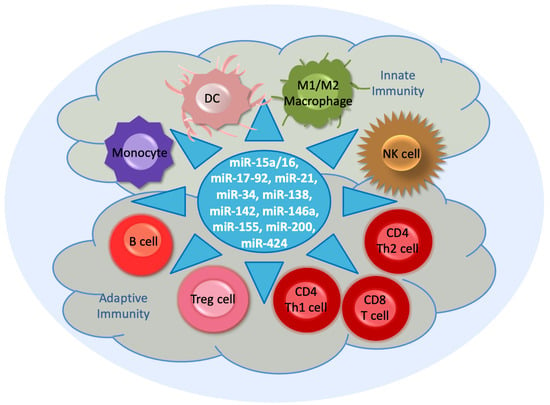
Figure 1
Open AccessReview
Does Precision-Based Medicine Hold the Promise of a New Approach to Predicting and Treating Spontaneous Preterm Birth?
by
Hiba Khan, Natasha Singh, Luis Yovera Leyva, Johann Malawana and Nishel M. Shah
Int. J. Transl. Med. 2024, 4(1), 15-52; https://doi.org/10.3390/ijtm4010002 - 05 Jan 2024
Abstract
►▼
Show Figures
Background: Preterm birth (PTB) is a leading cause of childhood disability, and it has become a key public health priority recognized by the World Health Organization and the United Nations. Objectives: This review will: (1) summarize current practice in the diagnosis and management
[...] Read more.
Background: Preterm birth (PTB) is a leading cause of childhood disability, and it has become a key public health priority recognized by the World Health Organization and the United Nations. Objectives: This review will: (1) summarize current practice in the diagnosis and management of PTB, (2) outline developments in precision-based medicine for diagnostics to improve the care provided to pregnant women at risk of PTB, and (3) discuss the implications of current research in personalized medicine and the potential of future advances to influence the clinical care of women at risk of PTB. Methodology: This is a narrative literature review. Relevant journal articles were identified following searches of computerized databases. Key Results: Current and emerging technologies for the utility of personalized medicine in the context of PTB have the potential for applications in: (1) direct diagnostics to identify and target infection as one of the main known causes of PTB, (2) identifying novel maternal and fetal biomarkers, (3) the use of artificial intelligence and computational modeling, and (4) combining methods to enhance diagnosis and treatment. Conclusions: In this paper, we show how current research has moved in the direction of the targeted use of biomarkers in the context of PTB, with many novel approaches.
Full article

Figure 1
Open AccessArticle
Prognostic Value of the Width of Invasion in pT3 Cutaneous Melanomas
by
Dana Antonia Țăpoi, Ancuța-Augustina Gheorghișan-Gălățeanu, Laura Maria Gosman, Adrian Vasile Dumitru, Ana Maria Ciongariu and Mariana Costache
Int. J. Transl. Med. 2024, 4(1), 1-14; https://doi.org/10.3390/ijtm4010001 - 26 Dec 2023
Abstract
►▼
Show Figures
Intermediate-thickness melanomas display highly variable outcomes influenced by both clinical and histopathological characteristics. This study investigates several clinicopathological prognostic factors for pT3 cutaneous melanomas, focusing on a novel parameter, the width of invasion. This is a retrospective study of 49 patients diagnosed with
[...] Read more.
Intermediate-thickness melanomas display highly variable outcomes influenced by both clinical and histopathological characteristics. This study investigates several clinicopathological prognostic factors for pT3 cutaneous melanomas, focusing on a novel parameter, the width of invasion. This is a retrospective study of 49 patients diagnosed with cutaneous melanoma between 2012 and 2018 who were followed up for at least five years. We evaluated the age, gender, tumor location, Breslow depth of invasion, width of invasion, mitotic index, the presence/absence of ulceration, regression, microsatellites, lymphovascular invasion, and perineural invasion for their association with disease progression and survival. Cox univariate analysis revealed that progression-free survival (PFS) was significantly associated with age, depth of invasion, width of invasion, lymphovascular invasion, microsatellites, and perineural invasion. Overall survival (OS) was significantly associated with age, depth of invasion, width of invasion, microsatellites, and perineural invasion. Through multivariate Cox proportional hazards regression, the only factor associated with both PFS and OS was the width of the invasion. This is one of the few studies to assess the width of invasion and we have demonstrated that this parameter could become an important prognostic factor for cutaneous melanomas.
Full article
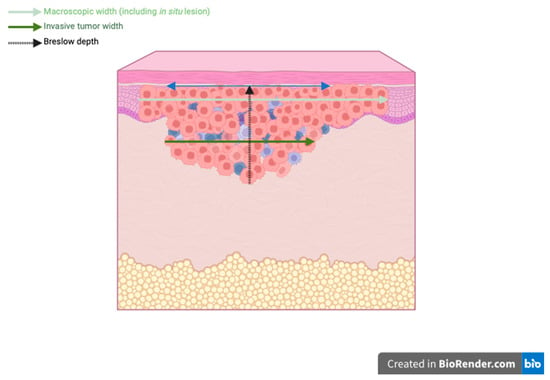
Figure 1
Open AccessArticle
Chronic Inhibition of Nitric Oxide Synthases Impairs Spatiotemporal Learning and Memory to a Similar Extent in C57BL/6 and hAPP23+/− Mice
by
Jhana O. Hendrickx, Elke Calus, Peter Paul De Deyn, Debby Van Dam and Guido R. Y. De Meyer
Int. J. Transl. Med. 2023, 3(4), 516-526; https://doi.org/10.3390/ijtm3040036 - 14 Dec 2023
Abstract
►▼
Show Figures
Due to global population growth, age-related disorders like cardiovascular disease and dementia are anticipated to increase. Recent data suggests a connection between cardiovascular disease and neurodegeneration, especially focusing on arterial stiffness (AS) and Alzheimer’s disease (AD). In light of this, we conducted a
[...] Read more.
Due to global population growth, age-related disorders like cardiovascular disease and dementia are anticipated to increase. Recent data suggests a connection between cardiovascular disease and neurodegeneration, especially focusing on arterial stiffness (AS) and Alzheimer’s disease (AD). In light of this, we conducted a study to explore the impact of long-term nitric oxide synthase (NOS) isoform inhibition, which leads to AS, on neurobehavioral performance. We also compared these effects in an AD model and control mice. C57BL/6 and hAPP23+/− mice (an established AD model) were given 0.5 mg/mL N(G)-Nitro-L-Arginine Methyl Ester (L-NAME) in their drinking water for 16 weeks. Our findings indicate that chronic non-selective NOS inhibition increased AS and reduced spatiotemporal learning and memory in both C57BL/6 and hAPP23+/− mice. These effects were consistent across both groups, emphasizing the role of neuronal NOS (nNOS) in cognitive aging, regardless of genetic predisposition to AD.
Full article

Figure 1
Open AccessArticle
Influence of the Core Branching Density on Drug Release from Arborescent Poly(γ-benzyl L-glutamate) End-Grafted with Poly(ethylene oxide)
by
Mosa Alsehli and Mario Gauthier
Int. J. Transl. Med. 2023, 3(4), 496-515; https://doi.org/10.3390/ijtm3040035 - 12 Dec 2023
Abstract
Amphiphilic dendritic copolymers of arborescent poly(γ-benzyl L-glutamate) (PBG) of generations G1 and G2, grafted at their chain ends with poly(ethylene oxide) (PEO) segments (PBG-eg-PEO) were synthesized, characterized, and evaluated as nanocarriers for doxorubicin (DOX). The copolymers were designed with hydrophobic PBG
[...] Read more.
Amphiphilic dendritic copolymers of arborescent poly(γ-benzyl L-glutamate) (PBG) of generations G1 and G2, grafted at their chain ends with poly(ethylene oxide) (PEO) segments (PBG-eg-PEO) were synthesized, characterized, and evaluated as nanocarriers for doxorubicin (DOX). The copolymers were designed with hydrophobic PBG cores having three different branching densities and were characterized by proton nuclear magnetic resonance (1H NMR) spectroscopy, size exclusion chromatography (SEC), transmission electron microscopy (TEM), and atomic force microscopy (AFM). Dynamic light scattering (DLS) measurements revealed that these amphiphilic molecules behaved like unimolecular micelles without significant aggregation in aqueous media such as phosphate-buffered saline (PBS), with diameters in the 13–29 nm range depending on the generation number and the core structure. Efficient encapsulation of DOX by these unimolecular micelles was demonstrated with drug loading capacities of up to 11.2 wt%, drug loading efficiencies of up to 67%, and pH-responsive sustained drug release, as determined by UV spectroscopy. The generation number of the copolymers and the branching density of the dendritic PBG core were found to have influenced the encapsulation and release properties of the micelles. Given the tailorable characteristics, good water dispersibility, and biocompatibility of the components used to synthesize the amphiphilic arborescent copolymers, these systems should be useful as robust nanocarriers for a broad range of therapeutic and diagnostic agents.
Full article
(This article belongs to the Collection Feature Papers in International Journal of Translational Medicine)
►▼
Show Figures

Figure 1
Open AccessArticle
Inhibition of Spontaneous Hepatocarcinogenesis by 4,5-Didehydrogeranylgeranoic Acid: Effects of Small-Dose and Infrequent Administration
by
Masahide Omori, Yoshihiro Shidoji and Hisataka Moriwaki
Int. J. Transl. Med. 2023, 3(4), 487-495; https://doi.org/10.3390/ijtm3040034 - 28 Nov 2023
Abstract
Inhibitory effects of 4,5-didehydrogeranylgeranoic acid (dGGA) on the development of tumors were investigated in spontaneous hepatoma mice, C3H/HeNCrj. Experiment 1: Male mice at 8 weeks of age were raised on a basal diet, and then provided with a diet containing 0.02% dGGA from
[...] Read more.
Inhibitory effects of 4,5-didehydrogeranylgeranoic acid (dGGA) on the development of tumors were investigated in spontaneous hepatoma mice, C3H/HeNCrj. Experiment 1: Male mice at 8 weeks of age were raised on a basal diet, and then provided with a diet containing 0.02% dGGA from 32 to 91 weeks of age. Experiment 2: dGGA was administered to the animals only once at different time points, from 2 months to 17 months after birth, respectively. Experiment 3: dGGA was administered twice to the mice at different time points: at 5 months and 11 months, and at 8 months and 11 months, respectively. When the inhibitory effects on tumor development were evaluated with the incidences of tumors, average numbers, and weight of tumors per mouse, there was a marked relationship between the time of single or dual dosing and the inhibitory effects of dGGA. The greatest inhibitory effects were observed in Experiment 3 in the group of animals given dGGA at the ages of 8 and 11 months, which were far superior to the results with a large dose of the compounds for a long time. These results might indicate that dGGA administered at the right time in the right amount effectively prevents the development of cancer.
Full article
(This article belongs to the Collection Feature Papers in International Journal of Translational Medicine)
►▼
Show Figures
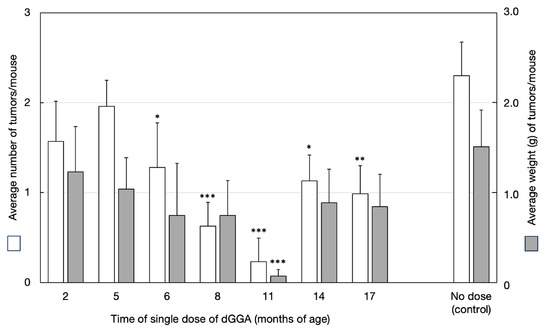
Figure 1
Open AccessArticle
Exploring the Prognostic and Predictive Roles of Ki-67 in Endometrial Cancer
by
Laura Paleari, Mariangela Rutigliani, Oriana D’Ecclesiis, Sara Gandini, Irene Maria Briata, Tania Buttiron Webber, Nicoletta Provinciali and Andrea DeCensi
Int. J. Transl. Med. 2023, 3(4), 479-486; https://doi.org/10.3390/ijtm3040033 - 01 Nov 2023
Abstract
Background: Up to now, endometrial cancer (EC) treatments are mainly represented by surgery followed by adjuvant chemotherapy or radiotherapy. The updated guidelines give a 2A recommendation for the use of hormone therapy only in advanced low-grade ECs, underlying the need for more data
[...] Read more.
Background: Up to now, endometrial cancer (EC) treatments are mainly represented by surgery followed by adjuvant chemotherapy or radiotherapy. The updated guidelines give a 2A recommendation for the use of hormone therapy only in advanced low-grade ECs, underlying the need for more data on the role of hormone therapy in the adjuvant setting. Methods: The clinicopathological data of 158 early-stage EC patients was retrospectively collected. A Ki-67 cut-off value of 40% was established based on literature data. Disease-free survival (DFS) and Overall survival (OS) were evaluated. Results: Results: Multivariate analysis of DFS and OS showed a significantly increased risk of progression in patients with >40% Ki-67 [HR = 3.13 (95% CI; 1.35–7.14); p = 0.007] and a significantly higher relative risk of death [HR = 3.70 (95% CI; 1.69–8.33); p = 0.001]. The predictive role of the Ki-67 index was highlighted by the clinical benefit of adjuvant hormone in patients with high Ki-67. Conclusions: Our results suggest a positive role of the Ki-67 index as a prognostic and potentially predictive marker in EC, although further studies are warranted to reach a definitive conclusion.
Full article
(This article belongs to the Collection Feature Papers in International Journal of Translational Medicine)
►▼
Show Figures

Figure 1
Open AccessReview
A Review Concerning the Use of Etravirine and Darunavir in Translational Medicine
by
Mariana Pereira and Nuno Vale
Int. J. Transl. Med. 2023, 3(4), 461-478; https://doi.org/10.3390/ijtm3040032 - 27 Oct 2023
Abstract
This comprehensive review explores two antiretroviral drugs, Etravirine (ETV) and Darunavir (DRV), a non-nucleoside reverse transcriptase inhibitor and a protease inhibitor, that are commonly used in human immunodeficiency virus (HIV) infection treatment, often in combination with each other. The pharmacokinetic properties of these
[...] Read more.
This comprehensive review explores two antiretroviral drugs, Etravirine (ETV) and Darunavir (DRV), a non-nucleoside reverse transcriptase inhibitor and a protease inhibitor, that are commonly used in human immunodeficiency virus (HIV) infection treatment, often in combination with each other. The pharmacokinetic properties of these drugs are covered as well as the clinical trials of these two drugs combined. This paper also delves into the possible repurposing of these two drugs for other diseases, with drug repurposing being a significant factor in addressing global health challenges. DRV was extensively studied for treating COVID-19, as well as other infections, such as candidiasis and cryptococcosis, while ETV proved to be efficient in hampering Zika virus brain infection. The focus on cancer repurposing is also explored, with the results revealing that ETV has a particular inhibitory effect on ovarian cancer in vitro and on cancer molecules, such as anterior gradient protein 2 homolog (AGR2) and casein kinase 1 (CK1ε), and that DRV has an in silico inhibitory effect on human lactate dehydrogenase A (LDHA) and induces the in vitro and in vivo inhibition of pepsin, consequent laryngopharyngeal reflux, and possible laryngeal and hypopharyngeal carcinomas. The significance of fresh methods of drug development is emphasized in this work, as is the enormous potential for new therapeutic uses of the antiretroviral drugs ETV and DRV in viral and non-viral disorders.
Full article
(This article belongs to the Collection Feature Papers in International Journal of Translational Medicine)
►▼
Show Figures

Figure 1
Highly Accessed Articles
Latest Books
E-Mail Alert
News
Topics

Conferences
Special Issues
Topical Collections
Topical Collection in
IJTM
Feature Papers in International Journal of Translational Medicine
Collection Editor: Joan Oliva



